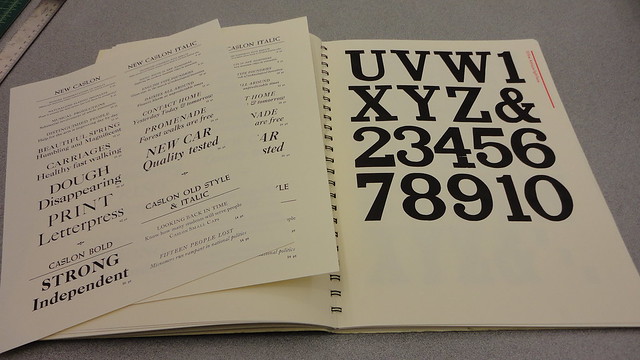On May 24th and 25th , 2011, Collections Action and Response Team (CART) members assembled for a mock recovery exercise. Participants included Richard Langdell, Kerry Lazarus, Owen Mcdowell, Lisa Maxfield, Joy Weale, Joanne Messineo Lisa Ladd, Josh Lascell, Deborah Howe, Brian Markee, and Stephanie Wolff. Over the course of the two separate sessions, CART members put into practice: assessment and problem solving skills, working together as a team, and hands-on experience in salvaging material.
Note: No collections materials were harmed in this exercise; all items used were personal materials or had been discarded from the Library collections. All activities were performed under the direction of a trained conservator.
For more information on disaster recovery check out these sites:
- http://www.nedcc.org/disaster/disaster.php
- http://www.heritagepreservation.org/programs/tfcurrent.html
- http://www.disaster-survival-resources.com/personal-disaster-recovery.html
 Items awaiting the disaster scenario. Some books were given special labels in order to distinguish between possible variations in materials.
Items awaiting the disaster scenario. Some books were given special labels in order to distinguish between possible variations in materials.
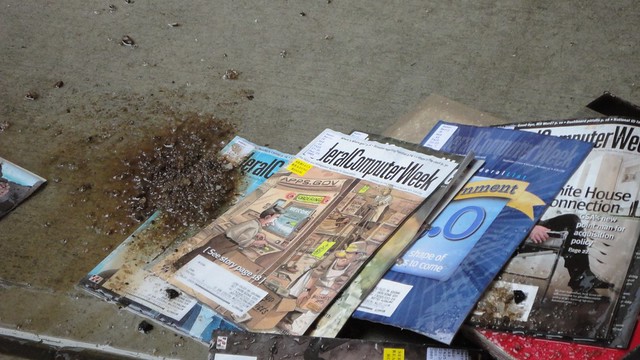 Sand and dirt were added, providing a more real-to-life feel to the event.
Sand and dirt were added, providing a more real-to-life feel to the event.
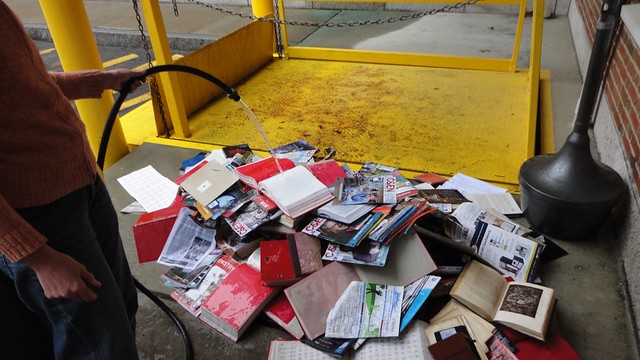 Layer upon layer of books and other media such as CD's and videos were interspersed with dirt mixture and lots of water.
Layer upon layer of books and other media such as CD's and videos were interspersed with dirt mixture and lots of water.
 Day one team members arrive at the scene to survey the damage, ascertain the situation and decide what to do next.
Day one team members arrive at the scene to survey the damage, ascertain the situation and decide what to do next.
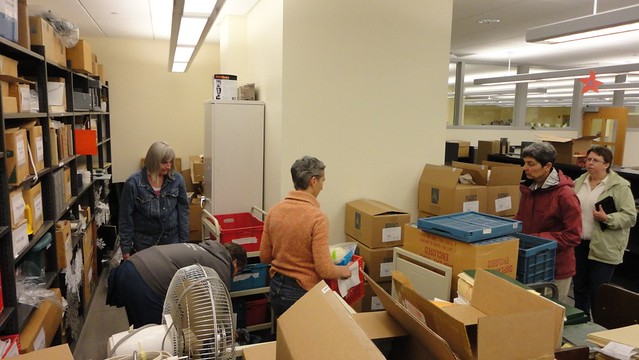 The supplies of course! The majority of disaster supplies are kept on shelves in Preservation Services. Each branch library has a disaster kit, which contains basic supplies such as plastic, flash light and gloves.
The supplies of course! The majority of disaster supplies are kept on shelves in Preservation Services. Each branch library has a disaster kit, which contains basic supplies such as plastic, flash light and gloves.
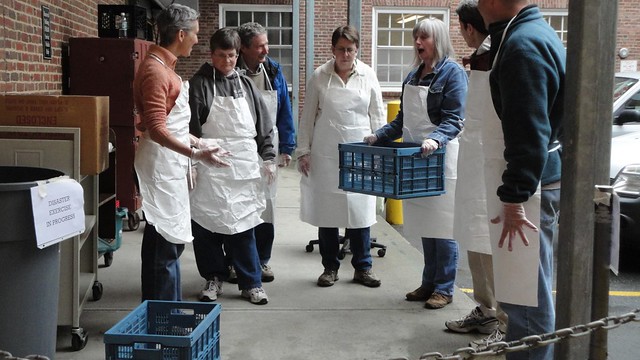 Collapsible crates are used to pack the wet books.
Collapsible crates are used to pack the wet books.
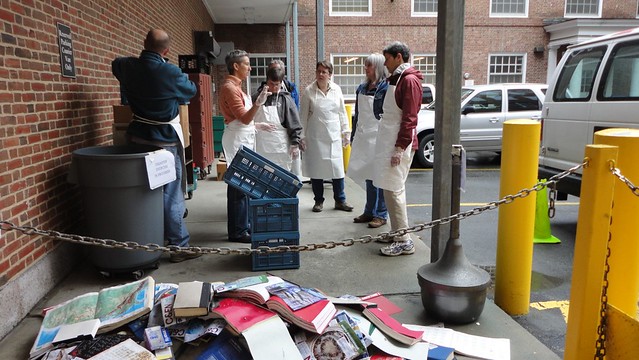 Once opened, the crates are stacked two high with a third crate dropped in at an angle. This configuration of the crates helps the packer by raising the height of the crate to be packed and keep the books tightly aligned.
Once opened, the crates are stacked two high with a third crate dropped in at an angle. This configuration of the crates helps the packer by raising the height of the crate to be packed and keep the books tightly aligned.
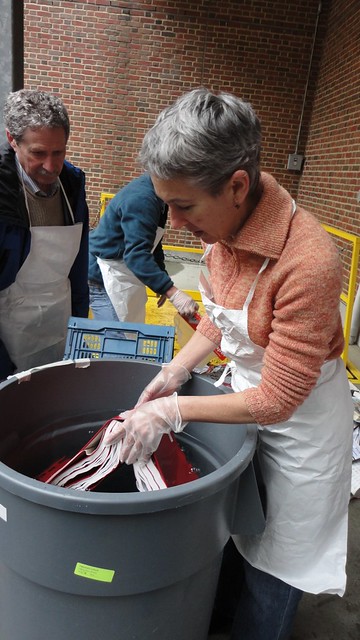
When books are badly soiled they can be rinsed off in
a large bath of fresh water.
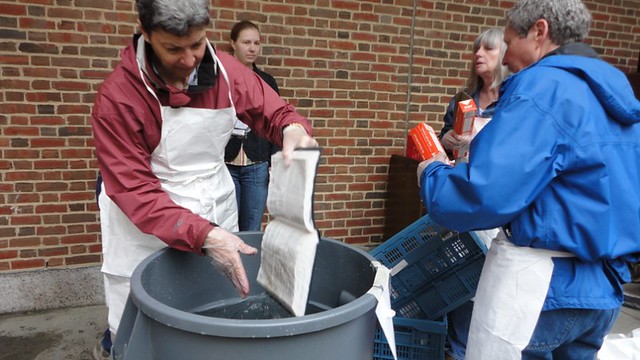 Joy tries out the rinsing method!
Joy tries out the rinsing method!
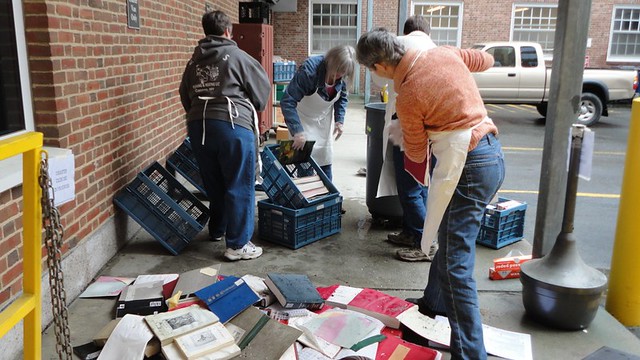 CART members soon fall into step, forming teams and a smooth work flow.
CART members soon fall into step, forming teams and a smooth work flow.
 Books are wrapped in wax paper to impede sticking to each other and deter off-setting of colors, especially red books.
Books are wrapped in wax paper to impede sticking to each other and deter off-setting of colors, especially red books.
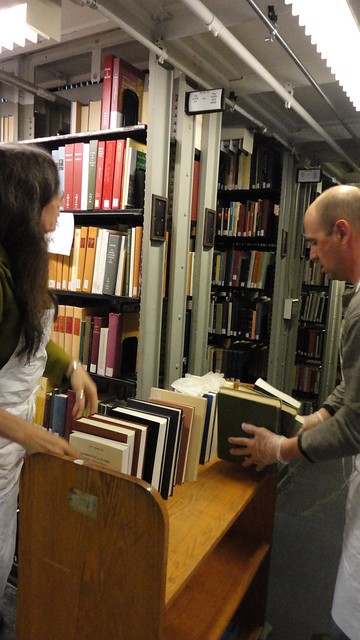
Meanwhile, members are informed that a leak has been found in the stacks and needs immediate attention. The team must decide who will go and address the new leak. Here Joanne and Brian remove books from the top shelf onto a cart.
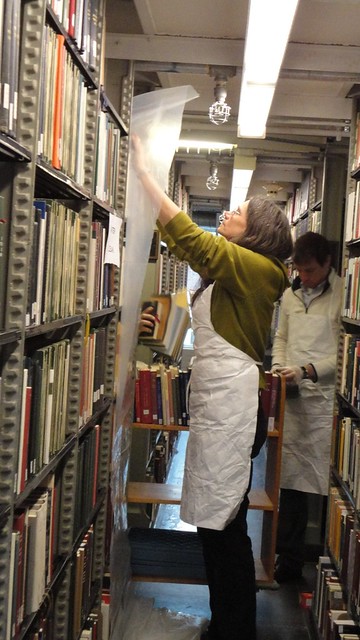
Because of the configuration of the shelving, the sheets of plastic must be individually cut for each section of the range.
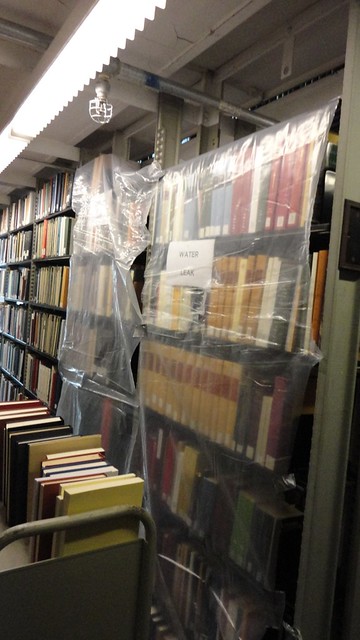
The area is expertly sealed off and the books will no longer be vulnerable to the leaky pipe.
After both sessions team members sat around our conference table and reviewed the exercise. A list of ideas and suggestions were compiled and will be used to improve the program. Thank you CART members for a successful event!
Written by Deborah Howe and photos courtesy of Beth Hetland

